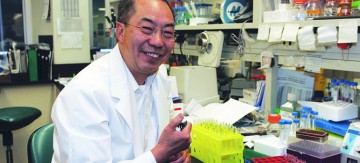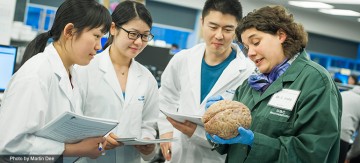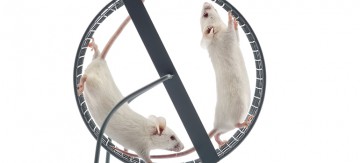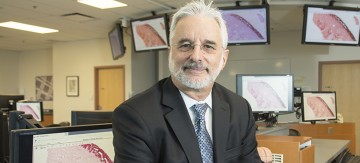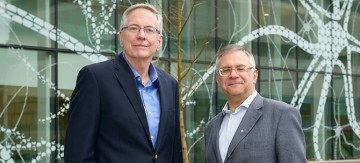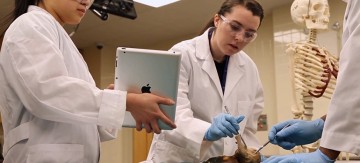Homepage
Discoverer of immune cell receptor wins UBC cancer prize
By bkladko | May 28, 2014
Tak Wah Mak, of the University of Toronto, will receive the inaugural Dr. Chew Wei Memorial Prize in Cancer Research.
Pop-ups and close-ups
By bkladko | May 22, 2014
To prevent cognitive overload, Claudia Krebs dissected neuroanatomy — and radically reassembled it.
A centesimal celebration
By bkladko | May 15, 2014
Two of the Faculty of Medicine’s newest programs, Midwifery and Genetic Counselling, each awarded their 100th diplomas this year.
A cruel disease, two maverick approaches
By bkladko | May 9, 2014
Two UBC scientists have climbed out onto separate limbs in their efforts to find a treatment for amyotrophic lateral sclerosis.
Oscar Casiro’s Victoria lap
By bkladko | May 8, 2014
The Faculty’s first Regional Associate Dean, Vancouver Island, steps down after 10 years of nurturing medical education from Victoria to Port McNeill.
UBC creates Centre for Excellence in Indigenous Health
By bkladko | May 5, 2014
Among other goals, the centre will work to increase Aboriginal representation in the health professions.
Two new leaders for the Djavad Mowafaghian Centre for Brain Health
By bkladko | April 28, 2014
Professors Brian MacVicar (left) and Jon Stoessl (right) join Max Cynader as Co-Directors.
Faculty bestows Lifetime Achievement Award on Peter Pare
By bkladko | April 25, 2014
His discoveries about the pathophysiology of asthma and COPD have made UBC a leading scientific centre in lung disease.
A recipe for making cancer treatment more bearable
By bkladko | April 17, 2014
Can a cooking class help men counteract the side-effects of prostate cancer treatment?
UBC puts tablets to work during anatomy lessons
By bkladko | April 16, 2014
Recognizing that medical students are increasingly reliant on mobile technology, the Southern Medical Program has integrated the devices into anatomy lab sessions.
